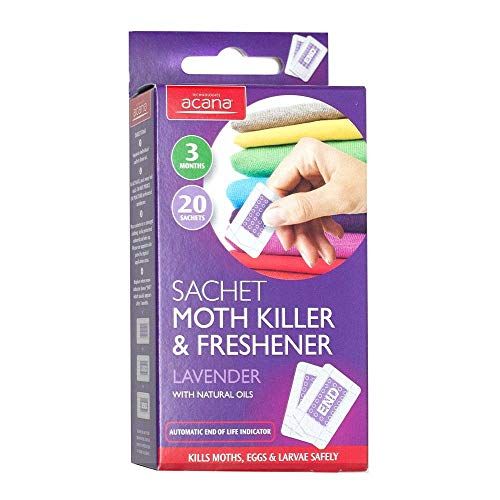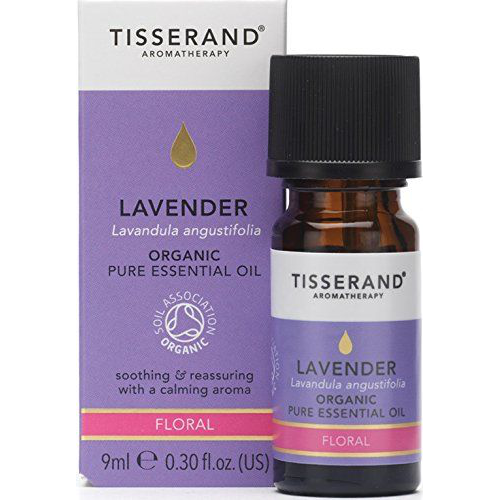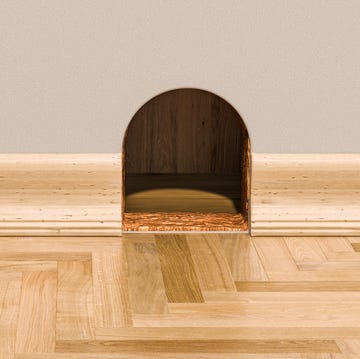There’s nothing worse than spotting a clothes moth in the bedroom. Once I’ve got rid of it, I instinctively need to check my clothes for signs of holes, making sure hidden larvae aren’t making a meal of any silk or cashmere items. Even the thought makes me shudder.
Clothes moths are a common sight all year round, but they can be particularly prolific in the spring and summer months. The warmer temperature ushers the females out of the cocoon with one mission in mind – finding a dark, quiet space in which to lay eggs. And the ongoing supply of food your wardrobe offers makes this the perfect spot. It’s full of the natural fibres that the larvae love to feast on.
You won’t realise there’s a problem until your most expensive items are peppered with holes. And clothes moths won’t stop there: they’ll even set up shop in your carpet and hide under your furniture – anywhere dark, humid and undisturbed.
To prevent this problem, we’ve pulled together a comprehensive guide on everything you need to know about clothes moths – including how to tell you’re dealing with this kind of moth and what to do should you spot one. Plus, how to stop them from coming back.
Moths: know your enemy
Even if you haven’t discovered holes in your clothes (yet…), the presence of certain types of moth in your home is a warning to take action. Look out for the brown house moth (8mm long with bronze, black-flecked wings) and the common clothes moth (6-7mm long with paler, beige wings). If they lay their eggs in your home, the larvae that hatch from them will feast on your fibres.
These grubs have a particular taste for animal fibres, such as wool, silk, cashmere and angora, but they’ll also target cotton fabrics if there’s nothing else available. They don’t differentiate between clothes or soft furnishings, so even if you don’t discover moth damage in your wardrobe, don’t assume your carpets are safe.
Hunt them down
Contrary to popular belief, moths aren’t just drawn to light. In fact, they prefer dark, out-of-sight places to lay their eggs, such as the back of your wardrobe or in seldom-opened drawers. Check in these spots for signs of creamy white larvae with a brown head. They’re hard to miss as one female moth can deposit anywhere from 50 to 1,000 eggs at a time! They’re also known to leave behind a musty smell when they’re present in greater numbers.
At the same time, check areas of carpet underneath rugs and underneath or behind seldom-moved furniture. Anywhere a moth can hide undisturbed, with access to a food source, will be a potential hotspot for moth activity.
Considering this, you must also check your attic or basement. If you’ve got clothes stored here, these dark, low-traffic areas will be ideal for moths.
Take action
To get rid of moths, you’ll need to break their life cycle, and that means getting rid of any unhatched eggs, as well as larvae. Start by taking all the clothes out of your wardrobe, then vacuum the bottom of the wardrobe thoroughly, using the crevice tool on your vacuum cleaner to get right into the corners and along the edges.
Next, wash all your clothes at the highest recommended temperature and take any dry-clean-only items to the dry cleaner. You can also wrap things made from non-washable fabrics in plastic bags and pop them in the freezer for 48 hours, as sub-zero temperatures kill moth larvae.
Vacuum carpets throughout the house thoroughly, paying particular attention to areas of carpet underneath furniture, then follow up by treating any areas where you’ve seen adult moths using a moth killer spray.
Gone for good
When it comes to moths, prevention is better than cure. Here are five things you can do to keep these winged pests away:
- Wash garments thoroughly before you put them away. Clothes moths are attracted to perspiration and food stains.
- Keep your wardrobe well ventilated. Air your wardrobe regularly to prevent warm, damp or musty conditions building up, which clothes moths love.
- Store away clothes carefully. Once washed, store your woollens away in a dedicated garment storage bag. Ideally, you want a sealed but breathable design, to protect it from moths while keeping the items fresh. Make sure it’s fully dry before long-term storage to prevent musty smells.
- Use a natural moth repellent. Cedar wood rings in your wardrobe or drawers can help deter moths. But keep in mind these won’t last for ever and will need to be refreshed every six to 12 months by sanding it down to release more of the oils.
- Spritz carpets with lavender. Make a natural repellent by adding a few drops of lavender essential oil to water in a spray bottle. Shake well, then spray your carpet and clothes lightly. You could also use a laundry detergent or fabric conditioner with a lavender fragrance to help deter moths.




















